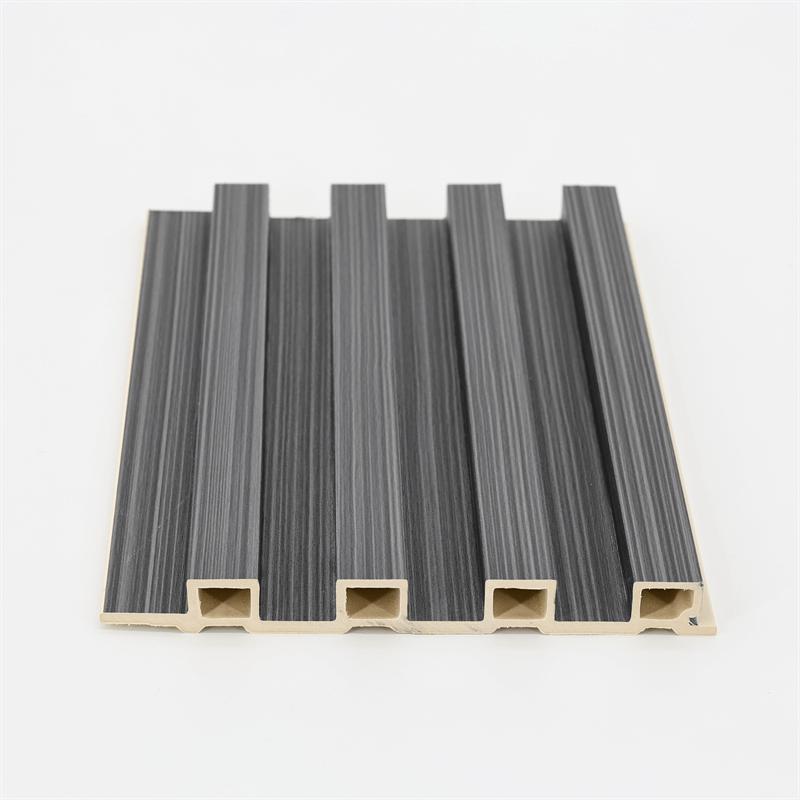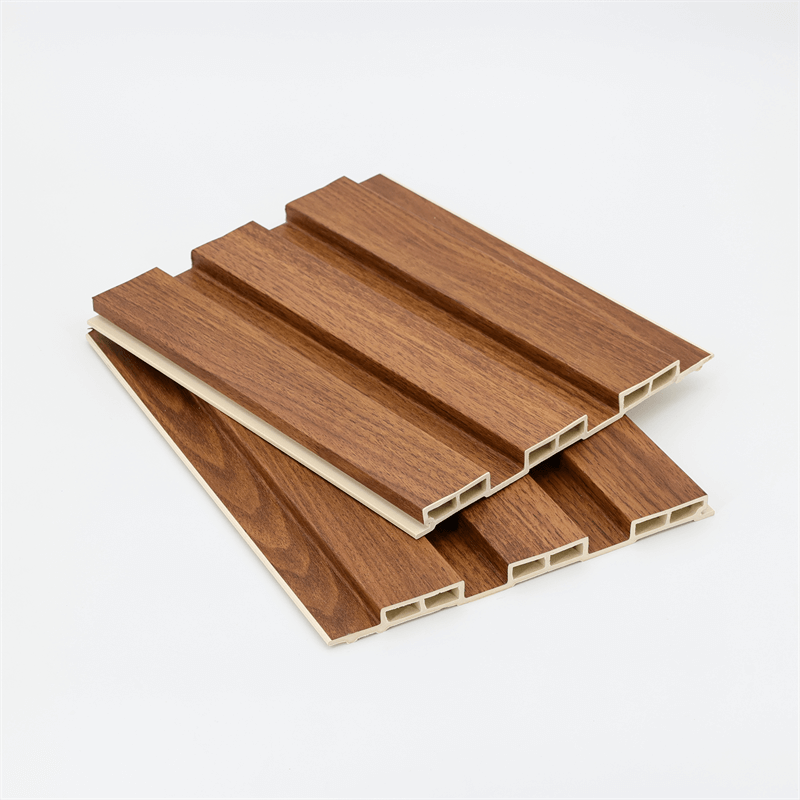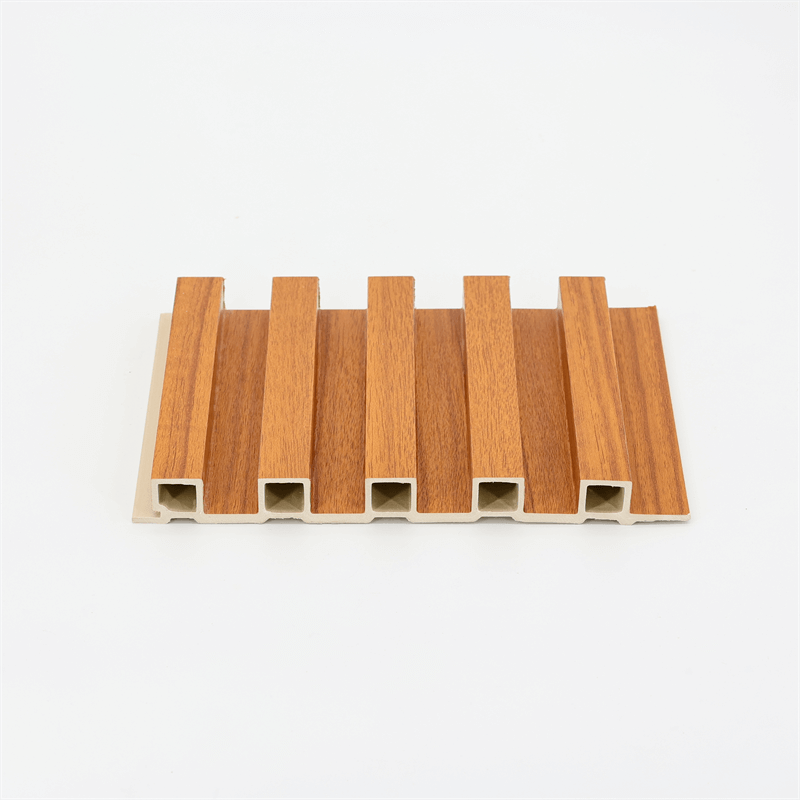Wall cladding serves as a protective layer for buildings, shielding them from external elements such as moisture, temperature variations, and harsh weather conditions.
In recent years, Wood Plastic Composite (WPC) wall panels have gained prominence for their exceptional ability to resist moisture and withstand the elements.
This essay explores the features and benefits of WPC wall panels in terms of moisture resistance, durability, weatherproofing, and long-term performance.
By examining these qualities, we can understand why WPC panels are a reliable choice for exterior and interior cladding applications.
I. Moisture Resistance: Guarding Against Dampness and Mold
One of the key advantages of WPC wall panels is their inherent moisture resistance.
These panels are engineered using a combination of wood fibers and recycled plastics, creating a composite material that repels water and guards against dampness.
Unlike traditional cladding materials, such as wood or gypsum, WPC panels do not absorb moisture, preventing the growth of mold, mildew, and rot.
This resistance to moisture ensures the integrity and longevity of the cladding, even in humid environments or areas prone to heavy rainfall.
By using WPC wall panels, buildings are protected from the damaging effects of moisture, contributing to their overall structural stability.
II. Durability: Withstanding the Test of Time
WPC wall panels are renowned for their exceptional durability, making them a reliable choice for long-lasting cladding solutions.
These panels are engineered to withstand the test of time and resist the effects of wear, impact, and fading.
The combination of wood fibers and recycled plastics creates a composite material that is highly resistant to cracking, warping, and splintering, even under extreme weather conditions.
This durability ensures that the cladding remains intact and visually appealing for years, reducing the need for frequent maintenance or replacement.
By selecting WPC wall panels, building owners can enjoy a durable and reliable cladding solution that stands up to the rigors of daily use and environmental exposure.
III. Weatherproofing: Shielding against Harsh Elements
WPC wall panels excel in their ability to weatherproof buildings, providing a protective barrier against the elements.
These panels are engineered to resist damage caused by UV radiation, extreme temperatures, and moisture penetration.
The composite material used in WPC panels acts as a shield, preventing the sun’s harmful rays from causing color fading or surface deterioration.
Additionally, the inherent moisture resistance of WPC panels ensures that they do not swell, warp, or degrade when exposed to rain, snow, or high humidity.
This weatherproofing feature enhances the longevity and visual appeal of the cladding, protecting the underlying structure and maintaining its aesthetic integrity over time.
IV. Long-Term Performance: Maintaining Aesthetics and Structural Integrity
WPC wall panels offer exceptional long-term performance, ensuring that the cladding maintains its aesthetics and structural integrity over an extended period.
These panels are designed to retain their color, texture, and overall appearance, even after years of exposure to the elements.
Unlike traditional cladding materials that may fade, chip, or deteriorate over time, WPC panels retain their original beauty and require minimal maintenance to keep them looking their best.
The combination of moisture resistance, durability, and weatherproofing ensures that the cladding performs consistently, providing a reliable and visually pleasing solution for both residential and commercial buildings.
WPC wall panels are renowned for their ability to resist moisture and withstand the elements, making them an excellent choice for wall cladding in various environments.
Their inherent moisture resistance guards against dampness, mold, and rot, contributing to the overall structural stability of buildings.
The exceptional durability of WPC panels ensures that they can withstand the test of time, resisting cracking, warping, and splintering.
The weatherproofing features of WPC panels shield against UV radiation, extreme temperatures, and moisture penetration, maintaining the aesthetics and integrity of the cladding.

Overall, the long-term performance of WPC wall panels makes them a reliable and sustainable choice for enhancing the durability and visual appeal of buildings.
WPC wall panels have established themselves as a superior choice for wall cladding due to their remarkable resistance to moisture and ability to withstand the elements.
Their moisture resistance protects buildings from dampness, mold, and rot, ensuring structural integrity and longevity.
The durability of WPC panels prevents cracking, warping, and splintering, providing a reliable and long-lasting cladding solution.
The weatherproofing capabilities of WPC panels shield against UV radiation, extreme temperatures, and moisture penetration, preserving the aesthetics and structural integrity of the cladding.
The exceptional performance of WPC wall panels makes them a reliable and sustainable choice for both exterior and interior cladding applications.
Their resistance to moisture and ability to withstand the elements contribute to the overall durability and longevity of buildings.
Additionally, the low maintenance requirements of WPC panels further enhance their appeal, saving time and resources in the long run.
By opting for WPC wall panels, builders, architects, and homeowners can enjoy the benefits of a reliable, aesthetically pleasing, and long-lasting cladding solution.
The ability of WPC panels to resist moisture and withstand the elements ensures that buildings remain protected, visually appealing, and structurally sound for years to come.
In conclusion, WPC wall panels are a practical choice for those seeking a cladding solution that resists moisture, withstands the elements, and offers long-term performance.
With their moisture resistance, durability, weatherproofing capabilities, and overall reliability, WPC panels redefine wall cladding standards and provide a cost-effective and sustainable option for enhancing the beauty and functionality of buildings.


